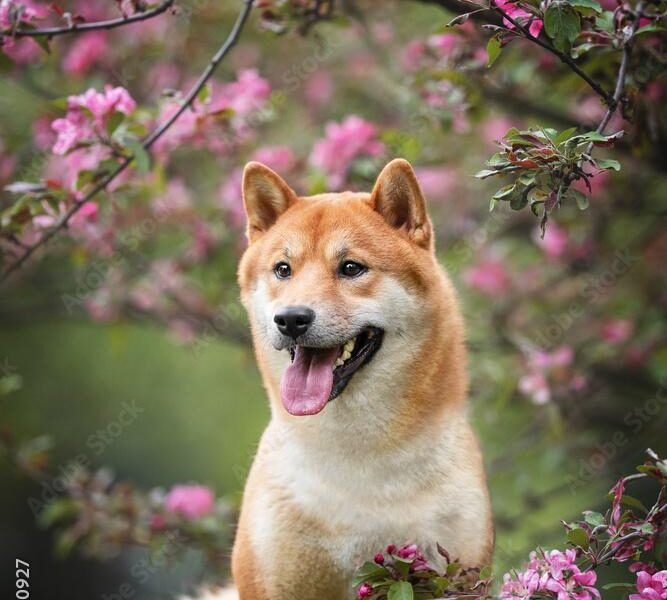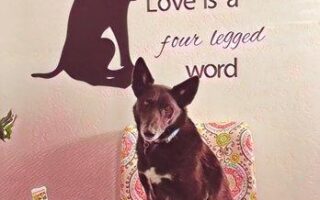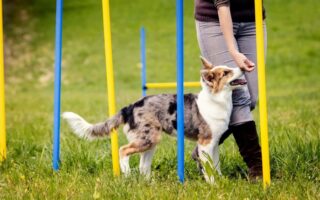Title: Mastering the Art of Shiba Inu Training: A Journey of Patience and Playfulness
Introduction:
In the heart of Japanese culture, the Shiba Inu stands as a symbol of loyalty and spirited independence. With their fox-like appearance and a personality that can charm even the sternest of hearts, these spirited pups have gained popularity around the globe. However, beneath their adorable exterior lies a unique challenge for pet owners: training. Known for their strong-willed nature and occasional stubborn streak, Shiba Inus require a thoughtful approach that balances discipline with affection. This article delves into effective strategies for Shiba Inu training—unlocking the secrets to fostering a harmonious relationship between you and your furry companion. Whether you’re a seasoned trainer or a first-time dog owner, you’ll discover insights that transform the training process into an engaging and rewarding adventure for both you and your Shiba Inu.
Table of Contents
- Understanding the Unique Traits of Shiba Inu: A Foundation for Training Success
- Effective Socialization Techniques: Building Confidence and Reducing Stubbornness
- Positive Reinforcement Strategies: Encouraging Desired Behaviors with Rewards
- Overcoming Common Training Challenges: Tips for Consistent Progress and Patience
- Q&A
- Final Thoughts
Understanding the Unique Traits of Shiba Inu: A Foundation for Training Success
Shiba Inus are renowned for their spirited nature and distinctive personality traits that set them apart from other breeds. Understanding these qualities is essential for anyone looking to train this intelligent and independent dog. With a natural inclination towards stubbornness, Shibas often require a consistent, patient approach. Here are some key traits that can influence their training:
- Independence: Shiba Inus often prefer to do things on their own terms, making them less responsive to traditional commands.
- Intelligence: They are quick learners but can also outsmart their handlers if training isn’t engaging.
- Alertness: Shibas have a keen awareness of their surroundings, which can be advantageous during training if harnessed properly.
- Vocalization: This breed is known for its unique vocalizations, which can be playful or expressive but may also pose challenges in obedience.
When embarking on training, it helps to appreciate these traits and adapt your methods accordingly. Utilizing positive reinforcement techniques works exceptionally well, particularly when rewards align with their interests. Develop a training schedule that capitalizes on their energetic nature and be prepared to introduce a variety of commands and activities to keep their attention. A structured approach considering their unique personalities will ultimately foster not just obedience but a loving bond between you and your Shiba Inu.
Effective Socialization Techniques: Building Confidence and Reducing Stubbornness
To foster a well-rounded Shiba Inu, engaging in a variety of social experiences is key. Introducing your dog to new environments, people, and animals helps build their confidence and adaptability. Consider the following effective techniques:
- Group Classes: Enroll your Shiba Inu in obedience or agility classes. This encourages learning in a social setting.
- Regular Outings: Take your dog on regular visits to parks, pet stores, or friends’ houses to expose them to diverse experiences.
- Playdates: Arrange playdates with other dog owners to help your Shiba Inu develop social skills and reduce any stubborn tendencies.
Another important aspect is using positive reinforcement to shape desired behaviors. When your Shiba Inu successfully interacts with others or shows calmness in new situations, reward them with treats or praise. This reinforces their good behavior and associates positive experiences with socialization. Here are a few tips to keep in mind:
| Technique | Benefits |
|---|---|
| Gradual Exposure | Helps reduce anxiety in new environments. |
| Controlled Socialization | Minimizes overwhelming experiences. |
| Consistency | Strengthens learned behaviors over time. |
Positive Reinforcement Strategies: Encouraging Desired Behaviors with Rewards
Utilizing positive reinforcement in Shiba Inu training can make the process enjoyable for both the dog and the owner. By rewarding your Shiba with treats, toys, or affection every time they display the desired behavior, you reinforce that action, making it more likely to occur again. Consider implementing the following strategies to maximize the effectiveness of your training:
- Consistency: Always reward the same behavior to avoid confusion.
- Timing: Deliver your reward immediately after the desired action to create a clear association.
- Variety: Alternate between different types of rewards to keep your Shiba engaged.
- Gradual Progression: Start with easy commands and gradually increase the difficulty level for a continued sense of achievement.
To better visualize your progress, consider tracking the behaviors you reinforce and their frequency in a simple table. This can help you stay organized and make adjustments to your training regimen when necessary:
| Behavior | Reward | Frequency of Reinforcement |
|---|---|---|
| Sit | Treat | 5 times per session |
| Come | Playtime | 3 times per session |
| Stay | Affection | 4 times per session |
By leveraging these techniques and consistently applying positive reinforcement, you can cultivate a strong bond with your Shiba Inu while teaching them valuable behaviors that enhance their well-being and your enjoyment of their company.
Overcoming Common Training Challenges: Tips for Consistent Progress and Patience
Training a Shiba Inu can initially feel like an uphill battle due to their unique personality traits. Here are some tips for overcoming common hurdles:
- Consistency is Key: Establish a routine to help your Shiba Inu understand what is expected. Regular training sessions, ideally at the same time each day, promote familiarity and reliability.
- Positive Reinforcement: Utilize treats, praise, or toys as rewards for good behavior. This encourages your dog to repeat desirable actions while boosting their confidence.
- Patience Pays Off: Remember that progress may be slow at times. Shiba Inus are independent thinkers; give them time to process commands and respond at their own pace.
To further enhance your training experience, consider keeping an eye on factors that may hinder progress. A quick reference table can help:
| Challenge | Tip |
|---|---|
| Distractions | Train in a quiet environment and gradually introduce more stimuli. |
| Stubbornness | Mix up training methods and keep sessions interesting to maintain engagement. |
| Lack of focus | Shorten training sessions to keep your Shiba’s attention sharp. |
Q&A
Q: What makes Shiba Inu a unique breed when it comes to training?
A: Shiba Inu are known for their spirited independence and playful nature. This breed has a mind of its own, often resembling a cat in attitude rather than a typical dog. Their strong-willed personality can make training a challenge, but it also makes them incredibly rewarding companions when they do learn. Their intelligence and agility mean that with the right approach, they can excel in training.
Q: What are the best training methods for a Shiba Inu?
A: Positive reinforcement is the most effective training method for Shiba Inu. This means rewarding them with treats, praise, or playtime when they exhibit desired behaviors. Patience and consistency are key; using the same commands and expectations helps reinforce learning. Incorporating short, engaging training sessions can also maintain their interest and motivation.
Q: Are there specific challenges I should expect while training my Shiba Inu?
A: Yes, Shiba Inu can be quite stubborn and may display selective listening when they don’t feel like complying. They might also show a strong prey drive, which could lead to distractions during training. It’s not uncommon for them to ignore commands if they sense something more interesting around them. This independent nature means staying calm and persistent is essential; they may take longer to train than more compliant breeds.
Q: How can I socialize my Shiba Inu effectively?
A: Socialization is crucial for Shiba Inu to promote a well-rounded personality. Start early by exposing them to a variety of people, pets, and environments. Puppy classes can be beneficial as they provide controlled social interactions and professional guidance. Ensure that these experiences are positive, rewarding good behavior with treats and praise to help them associate new situations with rewards.
Q: How long does it generally take to train a Shiba Inu?
A: Training duration can vary significantly from one Shiba Inu to another, depending on factors like age, temperament, and consistency in training. Basic commands can take a few weeks to a couple of months to solidify, with ongoing reinforcement necessary, especially for advanced training or obedience. Regular practice and patience will go a long way in achieving desired results.
Q: Are there particular commands or tricks that Shiba Inu respond well to?
A: Shiba Inu often enjoy learning tricks that allow them to showcase their playful and agile nature. Commands like “sit,” “stay,” and “come” are essential, but they also excel in commands like “spin” or “roll over.” Engaging them in agility courses or interactive games can keep training sessions fun and exciting for them.
Q: Can I train my Shiba Inu at home, or should I consider professional help?
A: While many owners successfully train their Shiba Inus at home with sufficient research and dedication, professional training classes or one-on-one sessions can be extremely beneficial, especially for first-time dog owners. A professional can provide expert advice, more structured learning, and techniques to handle stubbornness effectively, supporting both you and your furry friend.
Q: What are some tips to maintain my Shiba Inu’s training as they grow?
A: To maintain your Shiba Inu’s training, keep training sessions consistent and ongoing. Regular reinforcement of commands, mixed with new tricks, helps keep their skills sharp. Incorporate training into everyday activities, like walks or playtime, and never underestimate the power of fun—engagement is key! Remember, Shiba Inu thrive on mental stimulation, so keep the challenge alive throughout their lives.
—
Q: Is there anything else I should know before starting my Shiba Inu’s training?
A: Absolutely! Understanding that every Shiba Inu is unique is vital. Stay adaptable in your training methods and remember to celebrate small victories along the way. The bond you build through training can lead to a fulfilling relationship, so enjoy the journey as you watch your Shiba Inu grow and learn.
Final Thoughts
As we draw the curtains on our exploration of Shiba Inu training, it’s clear that patience, consistency, and a sprinkle of humor are your best allies in this rewarding journey. The spirited nature of these charming dogs beckons a unique approach, characterized by understanding and communication that honors their independent spirit. Whether you’re teaching them basic commands or working on advanced tricks, remember that every moment spent training is an opportunity to strengthen the bond between you and your furry friend.
the adventure of training a Shiba Inu goes beyond just obedience; it’s about celebrating their quirky personalities and clever instincts. With the right tools and techniques, you can cultivate an environment where your Shiba not only learns but thrives. So, embrace the challenges, cherish the victories, and enjoy the delightful chaos that comes with having a Shiba Inu in your life. Happy training!


